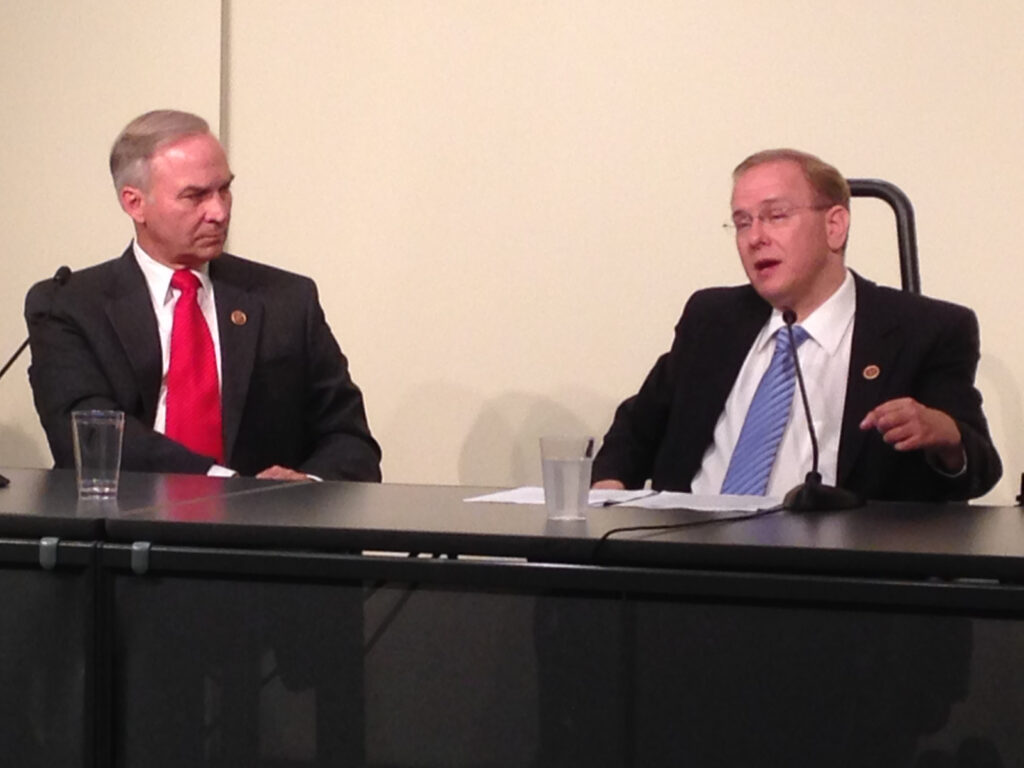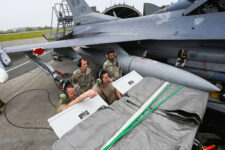
WASHINGTON: “We have the presumption we’re going to have the competitive edge when it comes to technology,” said Rep. Randy Forbes, “[that] just because we’ve had it in the last several decades that somehow or other we’re destined to have it in the future.” That’s a dangerous mistake, Forbes said Thursday at the Carnegie Endowment, where he and Rep. Jim Langevin spoke on how the Pentagon needs to innovate.
“The apparatus at the Pentagon is geared to do just the opposite,” Forbes said. “We are geared to protect our legacy systems. We are geared to protect the things we’ve all trained on for years. We’re geared to say let’s have zero risk.”
Wait a second, veteran defense reporter Otto Kreisher and I squawked as soon as moderator Michael O’Hanlon permitted questions. Isn’t Congress currently protecting” legacy systems” like the A-10 Warthog aircraft and Ticonderoga-class cruisers that the Pentagon wants to shelve? Doesn’t Congress overreact to even modest mistakes on procurement programs by legislating new layers of bureaucratic oversight in its own vain quest for “zero risk”?
“Sydney, for your question, if you think Jim or I, either one, are coming here defending Congress, we have not been very articulate,” Forbes replied to knowing laughter. “I think there’s just as much problem with Congress….We love to layer things over, put another acquisition review over top of another, [and] we’ve got to change that.”
“Congress can be just as much of a hindrance to innovation as the Pentagon, [but] they’re not always a hindrance,” Forbes went on. “Sometimes a blind hog finds an acorn.” (More laughter). The Navy was not working on countermeasures to the Chinese “carrier-killer” anti-ship ballistic missile, Forbes said, until his subcommittee ordered — and funded — the service to start one. “We’re constantly making sure we’re walking the right line between being the stumbling block that stops innovation and [being] the catalyst.”
“There is a balance that has to be struck,” agreed Rep. Langevin when I asked him after the public session. “We need to have oversight; at the same time I am concerned a lot of times about how we put layer upon layer upon layer of oversight in place….You create whole multiple layers of bureaucracy that are more expensive than the actual problem itself.”
But how do you fix that, I asked, when blasting federal officials for wasting taxpayer dollars is politically so much more attractive than nurturing innovators, who need room to take risks and often fail?
Congress needs “more of a balance” in its approach, Langevin replied. “If the intent was to do something the right way and there was no fraud or criminal activity involved, then we have to be more willing to work with the Pentagon so that when things like that do happen it doesn’t create a chilling effect.”
“I think you’ll see some of those changes next year,” Forbes told reporters after the event. “We just simply can’t have 40 different approval processes to go through, and it’s not just the money, as you know, it’s the time.”
House Armed Services Committee chairman Buck McKeon launched an effort last year to streamline and rationalize the acquisition system, including the problems that Congress created. It’s led by Rep. Mac Thornberry — HASC vice-chairman and arguably Forbes’ leading rival for the chairmanship when McKeon retires this year.
“I applaud Mac for doing this,” Forbes said. “This year was just kind of cutting and trimming” as the effort got started, [but] next year… I think you’ll see a much greater thrust on that.”
Air Force’s legislative proposal is an existential threat to the National Guard
In this op-ed, Francis M. McGinn, the head of the National Guard Association, blasts an Air Force proposal to transfer National Guard units performing space missions to the Space Force.



























